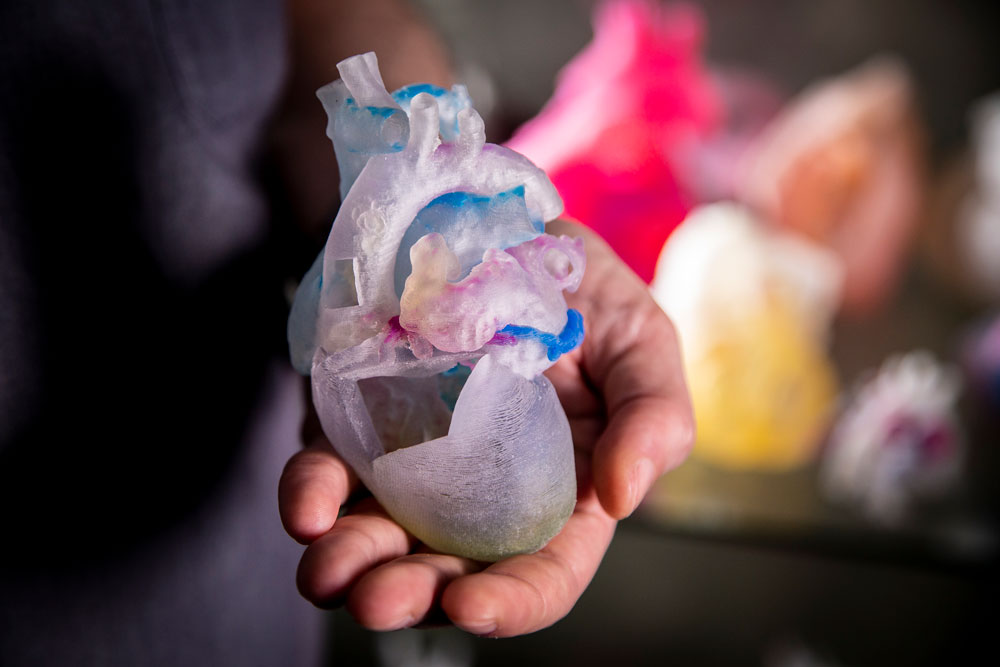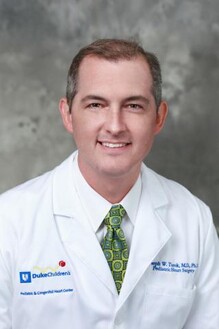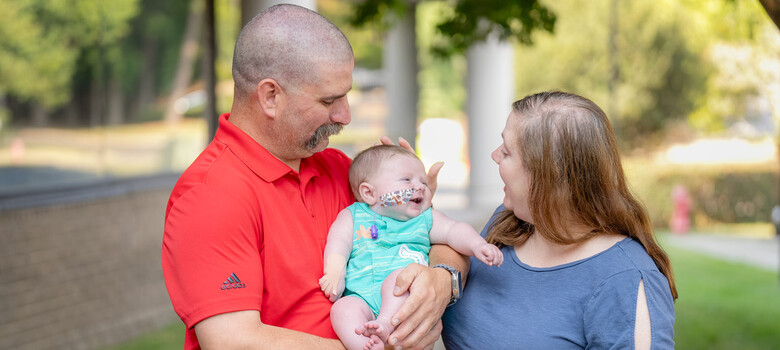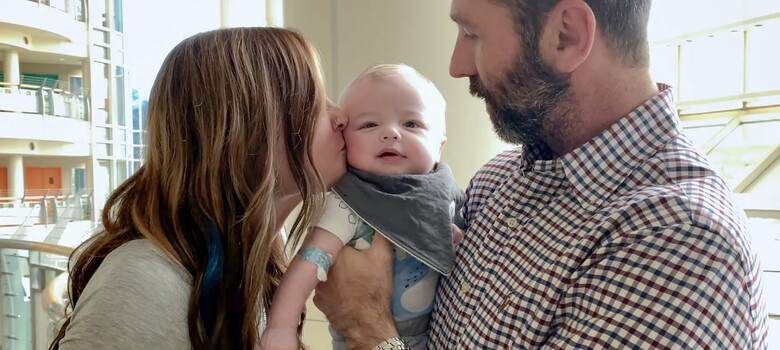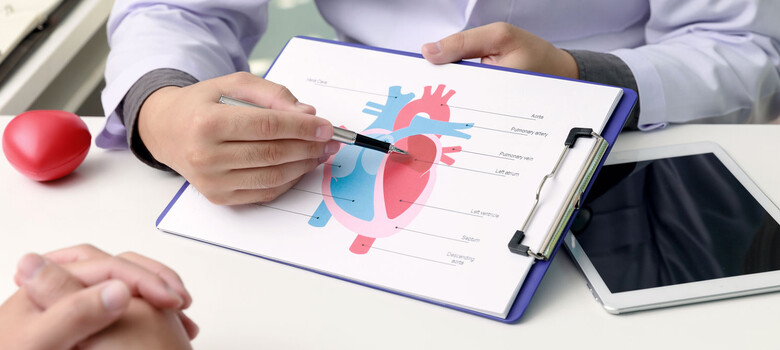Surgeons Use 3D-Printed Heart Model to Plan Complex Surgery

Josie Dunnigan smiles outside of Duke University Hospital.
Duke cardiologists collaborated with a Duke University technology lab to print a 3D model of a woman’s heart and ribcage to plan her complex heart surgery. Thanks to this innovation, 21-year-old Josie Dunnigan avoided a more invasive procedure and needed only a small incision between her ribs. As a result, Dunnigan is back to her favorite activities.
“We actually have the patient's heart -- to scale -- in our hands and we can look at it, turn it around, and remove different segments,” said Duke pediatric cardiologist Piers Barker, MD. Dr. Barker has been treating Dunnigan, who was born with a rare congenital heart defect called transposition of the great arteries, for more than a decade. “We can really understand the intracardiac anatomy in a way that is almost impossible to do with two-dimensional imaging techniques.”
Making a Heart from Scratch
To create a 3D model of Dunnigan’s heart, a sonographer used CT scan images to generate digital 3D files. Then Duke University’s Innovation Co-Lab prepared the files for a 3D printer and loaded it with liquid resin. It took more than 12 hours for the printer to create the life-size replica of Dunnigan's heart and rib cage.
Dr. Barker, Joseph Turek, MD, PhD, who is chief of pediatric cardiac surgery at Duke Children’s Hospital, and the rest of Dunnigan’s surgical team used the model to determine how they would replace the pulmonary valve without breaking Dunnigan’s breastbone. Turek pioneered a technique like this for similar surgeries.
According to Dr. Turek, Duke’s ability to offer these types of minimally invasive pulmonary valve replacement surgeries ultimately benefits patients. “They are going to have less time on the operating table and therefore will move through hospitalization much faster,” he said.
This article was adapted from "At the Heart of Research and Medicine," written by Lindsay Key, photos by Jared Lazarus, and video by Julie Schoonmaker.
